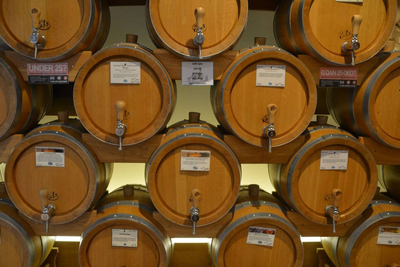There comes a time in every man or womans life, when you have to choose to weigh or not to weigh your bar inventory. Ok, not everyone… but if youre a bar owner or manager, then its a choice you will likely ponder one day. And since youre here reading this now, today must be that day.
Im not going to try and hard sell you on weighing your liquor bottles and kegs… I will just say that its really important to weigh your products if you want an accurate inventory. I am going to cover some common misconceptions on how to weigh your liquor inventory, why those ways are wrong, and how to weigh your liquor, wine, and draft beer the right way. Oh and Ill also point you in the right direction on selecting the right kind of scale to use if you do decide to weigh your inventory.

Ok, ready? Great, let’s get started…
There are few things that you absolutely need to weigh your liquor and draft beer:
1) A digital scale that weighs in ounces for liquor and wine bottles. And/or a scale large enough for kegs which will typically weigh in pounds/ounces. 2) A calculator, pen, and paper. 3) The density (specific gravity) for each product that you will be weighing.
I need the density for each product you say? Yes, yes you do. This is the part where most mistakes are made when weighing inventory. The usual thought process is – Ill get a scale and weigh each product before a shift and then weigh it after. If a bottle weighs 41.7 ounces in the beginning and 29.8 ounces at the end, then 11.9 ounces of product must have been used. Another thought is to weigh a bottle and then subtract the bottles tare weight (empty weight) to show how much liquor is left in the bottle.
Both ways seem logical, right?
They do, however both ways are wrong. Heres the issue… fluid ounces and weight ounces are not the same thing. Take Kahlua as an example: a 750 ML bottle of Kahlua holds 25.4 fluid ounces, however if you weighed just liquid.. . would it weigh 25.4 ounces? No, the 25.4 fluid ounces of Kahlua would actually weigh substantially more than 25.4 ounces. Why? Because of the density. Think of density as how thin/light or thick/heavy a product is.
As a starting point water has a density if 1. Liquor that is 80 proof is thinner or lighter than water, so it has a smaller density – in the .9 range. Liqueurs and cordials are going to be thicker or heavier than water, so their densities will be larger than 1. A products density is how bartenders are able to layer shots. Lighter liquors will float on top of heavier ones.
Ok, so what does all this density stuff mean? When you weigh liquor, wine, draft beer, or anything that has a density higher or lower than 1, you have to adjust for the density of the product for an accurate inventory. One last point about densities – a density is a dynamically changing number. That means a products density will fluctuate based on temperature. If you weigh a product in the morning and then again at night in a room where the ambient temperature has changed, that can raise or lower the density slightly.
When weighing inventory, there will always be a margin of error. Typically that margin of error (which takes density changes into account) is 2% and under. This is why weighing your bars inventory is by far has the highest accuracy of any inventory method. In comparison, eye-balling (now being called weightless inventory by some of the eye-balling inventory apps) has an average margin of error of about 15%. The difference in accuracy is huge!
Shot Glance Bar Liquor Inventory Rulers
FAQ
How much does a 750 ml bottle of alcohol weigh?
What is the average weight of a bottle of alcohol?
How much does a bottle of vodka weigh?
|
ABSOLUT BOTTLES
|
g
|
lb
|
|
1 LITER
|
1700
|
3.75
|
|
1.14 LITER
|
1800
|
3.97
|
|
1.5 LITER
|
2372
|
5.23
|
|
1.75 LITER
|
2795
|
6.16
|
How do you weigh liquor bottles for inventory?
How much do unopened liquor bottles weigh?
In addition, most people are unaware that two unopened bottles of the exact same brand can weigh a couple oz. different, so if the weight is off an oz. or two, don’t worry about it. If it’s more than that, you should correct it. Our database usually covers about 85 – 90% of most bar’s liquor bottle weights.
How do you weigh a liquor bottle?
The popular method of weighing liquor bottles is to manually take up every bottle, eyeball it and guess its bottle weight. But this is one of the most inaccurate methods of taking inventory. Not to mention frustrating and time-consuming! Liquor bottles have to be weighed twiceat the start of the inventory period, and again at the end of it.
How much alcohol is left in a bottle?
If a bottle weighs 41.7 ounces in the beginning and 29.8 ounces at the end, then 11.9 ounces of product must have been used. Another thought is to weigh a bottle and then subtract the bottle’s tare weight (empty weight) to show how much liquor is left in the bottle. Both ways seem logical, right? They do, however both ways are wrong.
How much does a bottle weigh?
The variance in bottle weights was about 10 grams. This is probably mostly due to me leaving a touch of liquid in the bottom of the bottle before weighing. Some varied by up to 15 grams but this was rare. So we can round our data to within 10 grams. The larger the bottle, the less weight per volume of liquid. Some times by a lot!
